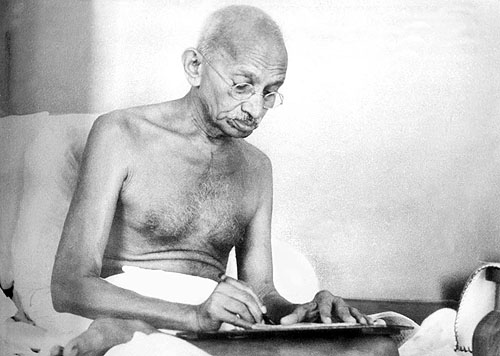HIS 112
Unit 13: South Asian Independence

Photo of Mohandas Karamchand Gandhi (1869-1948) in 1942. Gandhi was one of the leaders in the fight for South Asian independence from the British Commonwealth and one of the pioneers in the development of the idea of non-violent protest against civil and political injustice. Photo courtesy Wikipedia Commons.
 What you
must do in this unit
What you
must do in this unit
- Read the section "The British Colonies of India and Australia" in chapter 27 "Decolonization and Cold War in Asia" in chapter 29 in the textbook.
- Read my notes on South Asia.
- Watch the short video on South Asian imdependence.
- Study the Questions to Consider and the Key Terms for the unit.
- Post (or respond) with your thoughts/ideas/comments in the discussion board in Canvas: Why did South Asian leaders insist on the partition of the subcontinent (5 points)?
What you can do in this unit
Some videos that you can watch for this unit
Extra Credit Options
- For up to 50 points of extra credit, read Gandhi, Autobiography: The Story of
My Experiments With Truth and submit the Gandhi paper. I have a short video about this assignment.
- For up to 25 points of extra credit, watch Gandhi (Richard Attenborough, 1982) and
assess the historical accuracy of the film in a one-page paper.
- For up to 10 points of extra credit, read Gandhi, Indian
Home Rule (1909) and write a long paragraph in which you examine Gandhi's view of the British role in India.
- For up to 5 points of extra credit,
you can submit the answers to the Gandhi study questions. Please write in formal, complete sentences.
- For extra credit, please suggest a
relevant website for this unit of the course. Send your instructor the title of the site, the URL and a brief explanation why you find the information interesting and applicable to the material being studied this unit.
Unit Learning Objectives
- Upon successful completion of this unit, you will be able to (1) explain the creation of independent countries in South Asia since 1945 and (2) assess developments in the regions after World War II.
|